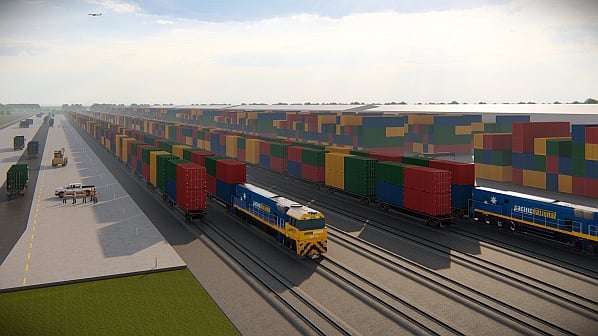Ready to turn insight into action?
We help organisations transform ideas into measurable results with strategies that work in the real world. Let’s talk about how we can solve your most complex supply chain challenges.

Why SRM deserves a seat at the executive table
Every organisation depends on suppliers for critical outcomes: continuity of service, product availability, safe operations, regulatory compliance, and innovation. Yet relationships with suppliers are often managed as a series of transactions, rather than as strategic assets. That gap shows up in avoidable stock-outs, creeping costs, missed sustainability targets, cyber incidents that start in the third party layer, and projects that slip because the operating rhythm with vendors isn’t clear.
A fit-for-purpose SRM framework gives structure to how you set expectations, collaborate, measure, improve, and protect value with suppliers. It’s not a new piece of bureaucracy; it’s a way to turn fragmented conversations into a disciplined operating model that delivers better outcomes for the business, for end customers, and for suppliers.
In Australia and New Zealand, the case for SRM is even stronger. Our long lead times, concentrated markets, regional logistics constraints, and evolving regulatory requirements (from modern slavery reporting to industry-specific safety and sustainability standards) increase the exposure and the upside for getting supplier relationships right.
What “good” SRM looks like
1) Clear segmentation. Not all suppliers are equal. “Strategic”, “critical”, “leverage”, and “tactical” suppliers need different treatment. Strategic and critical relationships get senior attention, joint planning, and structured improvement; leverage suppliers get performance discipline and competitive tension; tactical suppliers get simple, low-effort controls.
2) Defined governance. The right people meet at the right cadence with the right information. Roles and responsibilities are explicit, agendas are standardised, and decisions don’t drift.
3) Balanced scorecards. SRM elevates the discussion from “price and punctuality” to the broader mix that matters: service levels, quality, safety, sustainability, cyber posture, continuous improvement, innovation, and total cost to serve.
4) Joint value creation. Beyond compliance, top relationships run structured pipelines of improvements—SKU rationalisation, waste reduction, logistics optimisation, digital enablement, design-to-value, and demand/supply smoothing. Value is quantified and shared fairly.
5) Risk first. You maintain a live picture of supplier risk—operational, financial, cyber, ESG, geopolitical, and concentration risk—and connect it to contingency plans you actually rehearse.
6) Contract enablement. Contracts don’t sit in drawers; they underpin the cadence: data access, KPIs, service credits, governance meetings, audit rights, and targeted incentives for innovation and resilience.
7) Digital spine. Data flows reliably, dashboards are trusted, and collaboration isn’t trapped in inboxes. SRM tooling is lightweight but deliberate.
Where SRM typically goes wrong (and how to avoid it)
- One-size-fits-all: Applying the same governance to every supplier wastes time and alienates partners.
Fix: Segment properly and tune the cadence. - Scorecards without outcomes: Pretty dashboards that don’t change behaviour.
Fix: Tie KPIs to decisions, incentives, and consequences. - Heroic individuals, no system: Results rely on one relationship manager’s personal goodwill.
Fix: Document the playbook: team roles, agendas, escalation paths, knowledge handover. - Contract misalignment: Agreements lack the levers to support SRM (data sharing, continuous improvement clauses, joint innovation).
Fix: Refresh your contract templates to embed SRM mechanics. - Over-promising innovation: Big ideas fizzle without a pipeline method.
Fix: Treat innovation like a portfolio: prioritise, pilot, scale, and measure.
The building blocks of your SRM framework
1) Supplier segmentation that actually drives behaviour
Segment on two axes: business impact (how much this supplier matters to your service, safety, brand, regulatory compliance, and cost) and market dynamics (supply risk, switching cost, alternative capacity, geographic/geopolitical exposure).
- Strategic: Co-create roadmaps, executive-level governance, joint innovation, multi-year pipeline, risk reviews.
- Critical: Tight performance control, risk and continuity focus, regular operations reviews, targeted improvement sprints.
- Leverage: Commercial optimisation, competitive tension, standard SLAs, quarterly performance reviews.
- Tactical: Simple contracts, catalogue rates, exception-based monitoring.
Tip: Reassess segmentation every 6–12 months and whenever categories shift (e.g., supplier consolidation or regulatory change).
2) Governance and cadence
For Strategic suppliers (typical):
- Executive QBR (Quarterly): Strategy alignment, risk review, roadmap, investment/innovation decisions.
- Monthly Operations Review: Service levels, incidents, corrective actions, capacity planning.
- Working Groups (fortnightly/weekly): Focused improvement streams (e.g., forecasting accuracy, DIFOT, safety).
- Annual Planning: Joint objectives, targets, and value pipeline for the year ahead.
For Critical suppliers:
- Monthly Reviews with disciplined KPIs, risk watchlist, and seasonal readiness.
- Fortnightly Tactical Calls during peak or transition periods.
RACI clarity: Name the relationship owner, contract owner, commercial lead, technical lead, risk/compliance partner, and executive sponsor on your side and ask your supplier to do the same.
Standard agendas work: Keep 70% of the agenda consistent to make trend analysis real, and 30% dynamic to tackle current priorities.
3) Balanced KPIs & targets
Go beyond “price and on-time delivery”. Typical SRM scorecard lenses:
- Service & Quality: DIFOT/OTIF, first-time-right, rework/returns, stockouts, response time.
- Safety & Compliance: TRIFR where relevant, safety incidents, audit findings, permit adherence, regulated standards.
- Sustainability: Emissions intensity for the service, waste diversion rates, packaging optimisation, modern slavery due diligence activities.
- Cyber & Data: Security questionnaire status, control attestations, incident reporting time, critical vulnerability remediation SLAs.
- Innovation & Productivity: Number of submitted ideas, trial conversion rate, quantified benefits realised YTD.
- Financial & Commercial: Total cost to serve, price variance vs index, payment timeliness, rebates/earnbacks.
- Risk: Heat map movement, continuity test results, supplier financial health indicators.
Make targets explicit and define actions when thresholds are missed (improvement plan, service credits, or escalation).
4) Contract terms that enable SRM
Build SRM into the contract so it’s enforceable and practical:
- Data & Access: KPI data rights, system connectivity, audit rights, cyber evidence.
- Governance: Cadence, roles, escalation triggers, and participation expectations.
- Performance: Scorecard definitions, service credits and earn-back mechanisms.
- Improvement & Innovation: Structured pipeline, BAU improvement obligations, gain-share options for identified efficiencies.
- Risk & Continuity: Business continuity planning (BCP) requirements, test frequencies, change-notification windows.
- Sustainability & Ethical Sourcing: Modern slavery risk assessments, traceability obligations where appropriate, reporting cadence.
- Exit & Transition: Knowledge transfer, IP, data hand-back, transition services.
5) Value creation: make innovation real
Treat improvement like a portfolio:
- Pipeline: Backlog of opportunities, with owner, impact estimate, complexity, and dependencies.
- Stages: Discovery → Pilot → Prove → Scale.
- Funding: Small internal budgets for pilots; clear decision gates to scale.
- Measurement: Record the benefits: cost, service, safety, sustainability to show momentum and justify reinvestment.
- Recognition: Acknowledge supplier contributions; embed fair sharing mechanisms where benefits are joint.
Typical quick wins include demand smoothing, packaging reduction, route optimisation, process digitisation, and SKU rationalisation.
6) Risk management is continuous, not annual
Keep a live supplier risk register and connect it to operational decisions. Areas to monitor:
- Operational: Capacity constraints, quality drift, subcontractor reliance.
- Financial: Deteriorating financials, credit insurance signals.
- Cybersecurity: Emerging vulnerabilities, changing control posture, third-party sub-processor risk.
- Compliance & ESG: Audit findings, unresolved corrective actions, supply chain traceability challenges.
- Geopolitical & Natural Hazards: Route disruptions, extreme weather impacts, import/export shifts.
- Concentration: Single-site exposure, single-source for critical components.
Plan and test: Alternate supplier readiness, safety stocks, cold starts, emergency communications trees, and incident drills aligned to your risk profile.
7) Digital enablers without the baggage
You don’t need heavy software to start SRM well. Aim for a lightweight digital spine:
- A consolidated supplier master and segmentation view.
- A simple SRM workspace for agendas, minutes, decisions, actions, and issue logs.
- KPI dashboards that draw from your existing systems (ERP, WMS, TMS, service management, incident logs).
- A shared innovation backlog and benefits tracker.
- Documented playbooks and contract repository with version control.
As maturity grows, consider integrating vendor risk tools, sustainability data sources, and workflow automation without turning SRM into an IT project that stalls momentum.
A practical rollout roadmap
Days 0–30: Foundation
- Align on purpose and scope. What problems are we solving and where will SRM start?
- Segment suppliers. Use impact and risk as primary lenses.
- Choose the first 10–20 relationships. Focus on a mix of strategic and critical suppliers where results matter and access is possible.
- Define governance cadences. Lock QBRs, monthly ops reviews, and working groups.
- Draft a standard scorecard. Keep it achievable with 8–12 metrics.
- Stand up the digital basics. Shared workspace, dashboards drawing from existing data.
Days 31–90: Stand-up & stability
- Run the first QBRs and monthly reviews. Check the rhythm, refine agendas.
- Baseline KPIs and set targets. Where data’s imperfect, start with directional targets and improve quality over time.
- Launch the value pipeline. Capture 10–15 opportunities with rough sizes; start two quick-win pilots.
- Map the risk posture. Build a risk heat map per supplier and identify top three mitigations.
Days 91–180: Improve & prove
- Scale successful pilots. Quantify benefits; publish a short internal case note to build belief.
- Refine contracts. Where useful, negotiate addenda to embed SRM mechanics (data sharing, cadence, incentives).
- Measure cadence health. Track attendance, on-time actions, and decision cycle times to ensure meetings drive outcomes.
- Upskill relationship owners. Practical training on commercial conversations, performance coaching, and conflict resolution.
Days 181–365: Institutionalise
- Extend to more suppliers. Based on results, add the next cohort.
- Introduce category-wide playbooks. Standard approaches to common issues (e.g., DIFOT recovery, cyber uplift, sustainability data capture).
- Publish an annual SRM report. Summarise improvements, benefits, risk reductions, and next-year priorities to keep executive sponsorship strong.
What to measure (and report) to prove SRM works
- Service: Reduction in stockouts/service failures; improvement in OTIF; lower defect rates.
- Risk: Fewer critical incidents; improved time-to-recover; higher BCP readiness.
- Cost & Productivity: Reduced total cost to serve; fewer expedites; improved labour/productivity through process changes.
- Sustainability: Measured reductions in waste or emissions intensity where applicable; improved traceability and audit closure rates.
- Cycle time: Faster decision and escalation cycles; shorter lead times for change.
- Innovation: Number of ideas taken to pilot and scaled; quantified benefits realised.
Keep the narrative grounded: what changed, why it changed, and what’s next.
Sector nuances in ANZ
Government & Health: Strong governance and probity standards are essential. SRM must balance transparency with genuine collaboration. Expect robust auditability, clear conflict-of-interest management, and careful handling of joint innovation (IP, data).
Infrastructure, Utilities & Defence-adjacent: Safety, continuity, and cybersecurity weigh heavily. Contracts need enforceable requirements for testing, reporting, and right to audit.
Retail, FMCG & Manufacturing: Volatility and promotions drive demand complexity. SRM should obsess about forecast collaboration, inventory buffers, network optimisation, and packaging/logistics efficiency.
Universities, Hospitals & Precincts: Multi-stakeholder environments benefit from SRM’s clarity on roles, escalation, and performance baselines across cleaning, MEP, waste, catering, and other property services.
Playbook elements you can copy and tailor
Standard QBR agenda (90 minutes):
- Safety & incidents (5)
- Performance recap: scorecard trends, exceptions (20)
- Risk register: changes, mitigations, continuity (15)
- Value pipeline: wins, pilots, upcoming (20)
- Strategic topics: capacity, technology, roadmap, regulatory (20)
- Decisions & actions summary (10)
Monthly ops review (60 minutes):
- KPI deep dive, root-cause analysis
- Corrective actions status
- Forecasting & capacity outlook
- Upcoming changes or promotions/events
- Issues requiring escalation
Innovation pipeline fields (one line each):
- Problem statement, hypothesis, expected benefits, required data/systems access, owner, stage, next milestone, risks, go/no-go date.
Supplier relationship charter (one page):
- Shared objectives, behaviours, meeting cadence, data sharing principles, escalation path, contact list.
Common pitfalls to sidestep
- Trying to do everyone at once. Start with relationships that matter and where you’ve got access.
- Over-engineering the tooling. Begin with a pragmatic digital spine; evolve later.
- Unclear benefit logic. Agree on how benefits will be measured and attributed before pilots begin.
- Ignoring the people side. Equip relationship owners with the coaching, commercial, and conflict skills to handle tough conversations.
- No executive air cover. Senior sponsors must show up and back decisions; otherwise SRM stalls at middle management.
How Trace Consultants can help
Trace Consultants supports organisations in Australia and New Zealand to design, stand up, and embed SRM without unnecessary complexity. Depending on where you are on the journey, we can help with:
- SRM diagnostic & blueprint: Rapid current-state assessment, supplier segmentation, and a practical SRM design aligned to your risk, regulatory, and category mix.
- Framework & contract enablement: Scorecards, playbooks, governance packs, and updates to contract schedules so SRM is enforceable and usable.
- Digital spine: Light, sensible SRM workspaces and dashboards that pull from your existing systems. Where relevant, we can integrate Power Platform solutions and pragmatic automations to reduce manual effort.
- Stand-up support: Facilitation of early QBRs and operations reviews, coaching for relationship owners, and support in building a credible value pipeline with suppliers.
- Risk & continuity uplift: Practical supplier risk registers, test plans, and “cold start” rehearsals tied to local conditions and seasons.
- Sustainability & ethical sourcing integration: Incorporate sustainability and responsible sourcing into SRM in a way that’s feasible to measure and manage.
- Benefits tracking: Straightforward methods to quantify and report improvements so the program keeps momentum and sponsorship.
We keep it grounded, no bloated software projects, no performative governance, just the operating rhythm and artefacts that make supplier relationships work better. If you’d like a short, no-obligation discussion about your SRM maturity and quick wins, we can tailor a starting point appropriate to your categories and risk profile.
Putting it all together
An SRM framework isn’t paperwork. It’s the everyday structure that helps your team and your suppliers deliver on what matters: safe operations, reliable service, value for money, and meaningful improvement. It will:
- Make accountability and cadence clear.
- Ensure performance is measured and acted on.
- Turn improvement from “nice to have” into a pipeline of results.
- Expose and manage supplier risk before it becomes an incident.
- Build the trust (and tension) that leads to better outcomes over time.
Start small, focus on the relationships that matter most, and build belief through early results. Keep the framework human, the data useful, and the meetings purposeful. With those conditions in place, SRM becomes one of the most effective levers your organisation has, particularly in the ANZ context where geographic realities, supply concentration, and regulatory expectations raise the stakes.
If you’re ready to move from transaction management to relationship performance, Trace Consultants can help you stand up an SRM model that fits your business and sticks.
Quick checklist (to get moving this quarter)
- Agree SRM objectives and scope with executive sponsor
- Segment suppliers and select first 10–20 relationships
- Lock governance cadences and name the RACI on both sides
- Stand up scorecards for service, risk, cost, sustainability, and innovation
- Run the first QBRs and monthly operations reviews
- Launch two quick-win pilots and a simple benefits tracker
- Build a live supplier risk register and top-three mitigations
- Plan contract updates to embed SRM mechanics
- Publish a short internal update on early progress
Ready to turn insight into action?
We help organisations transform ideas into measurable results with strategies that work in the real world. Let’s talk about how we can solve your most complex supply chain challenges.









